Question Number 1
Please provide 3 strategies in which you will work with the School Board and School Police Chief to combat increasing acts of misconduct by students and teachers in our schools and school events. This includes gun violence, fights, and inappropriate contact with students and/or teachers.
I joined Broward County Public Schools four years after an event that fundamentally and permanently changed the fabric of our community. Coming to BCPS, I had already experienced the horrors and stresses of combat and had a strong background in force protection, counterterrorism, and security management. However, there was nothing in my background that could have prepared me to comprehend the experience I had while walking through the 1200 building of our Marjory Stoneman Douglas campus.
Planning numerous walk-throughs, helping teachers collect their belongings from their classrooms, and planning the sanitization and demolition of the 1200 building has given me a deep and direct understanding of how an entire district community is traumatically impacted when our sacred promise, that when people come into our schools safe, they will come home safe, is broken.
As Superintendent of Duval County Public Schools, I would bring this profound understanding to diligently work with the School Board and Police Chief to ensure our sacred promise is upheld. To accomplish this, we would employ a Comprehensive Safety and Behavioral Management Plan that emphasizes proactive measures and clear, consistent communication.
Three strategies with this plan that I would like to highlight would include:
Enhance Community Partnerships: When we open our doors each morning, we welcome our communities, along with all the societal challenges they may face into our schools. To put it simply, school violence is community violence and school safety reflects community safety. Understanding how these dynamics influence school safety and security is crucial to ensuring the safety of our educational ecosystem. As Superintendent, I would work closely with our School Board, Chief of Police, local law enforcement, mental health services, local business, and community organizations to create a holistic and transparent approach to school safety.
Cultivate a Positive School Culture and Climate: 80% of student misbehaviors happen outside the classroom, 80% of classroom misbehaviors happen during the first and last five minutes of class, and only 4% of misbehaviors happen during supervised instruction. Therefore, to cultivate a positive school culture and climate district-wide, our approach would focus on the following key elements:
Bell-to-Bell Engagement
Supervision of Non-Instructional Areas
Positive Behavior Messaging and Consequences
Objective and Consistent Enforcement of Discipline Plans
Building Appropriate Relationships
Teaching Coping, Conflict-Resolution, and Character-Building Skills to Students, Teachers, and Staff
Create a Comprehensive Reporting, Response, Accountability, and Communication System: The system would ensure that:
All students and staff are fully aware of how report issues
The systems to report issues are easy to find and simple to use
Data from various reporting systems (FotifyFL, GoogleForms, etc.) are captured, consolidated, and routed within a single system
Accountability measures, such as removing employees under investigation from student contact, are carried out swiftly and with fidelity
The Cabinet, Superintendent, and School Board are notified of situations quickly and seamlessly
Community and Stakeholder communications are timely and transparent.
Question Number 2
The Duval County Public Schools' annual budget exceeds two billion dollars. Please describe the work experiences you have had that show your ability to manage a budget of this size. Additionally, please describe your approach to budget forecasts, i.e., factors to be considered, appropriate timelines, etc.
Throughout my career as an Army Officer, Entrepreneur, and Educational Leader, I have created and managed substantial budgets ranging from several hundred million to several billion. In my current role, I directly manage a significant $100M+ Division budget and work together with the Deputy Superintendent of Operations to ensure the fiscal strategies of our $6B+ budget are aligned with district-wide educational goals.
Additionally, in my roles at Kansas City Public Schools and Volusia County Schools I spearheaded the Data Management Committee to ensure meticulous attention to detail in managing the district’s budget and state school accountability measures. My role involved ensuring that all potential funding was meticulously accounted for, and that performance metrics were met, leaving no points or dollars on the table. This proactive management was instrumental in maximizing our resource utilization and supporting our district's financial health.
Overall, I am committed to transparency and fiscal responsibility. I am also a strong proponent of zero-based budgeting and believe that the organization’s budget should be a reflection and driver of its strategic plans, operational goals, and guardrails. I created the first ever zero-based budget for the BCPS I&T Division and am excited that BCPS is expanding zero-based budgeting throughout the entire organization.
Approach to Budget Forecasts:
Stakeholder Collaboration: with department heads, school leaders, the School Board, and community members to ensure the budget aligns with the district’s educational priorities and operational requirements.
Economic and Legislative Analysis: of local and national economic trends and legislative changes that impact state funding, property taxes, and other financial sources. An example is the current conflict between new Title IX regulations and Florida’s Parental Rights in Education Act. This conflict could potentially impact over $430M of federal funding including Title I, Title II, Title IV, IDEA, National School Lunch Program and School Breakfast Program, Pell Grants, Career and Technical Education (CTE), Head Start, Federal Work-Study Programs, Grant Programs for Improving Teacher Quality.
Enrollment and Staffing Projections: to maintain optimal teacher-to-student ratios, enhancing educational effectiveness.
Capital Expenditures and Strategic Investments: according to budget availability and district priorities, ensuring sustained infrastructure growth.
Risk Management and Contingency Planning: including maintaining reserves for unforeseen expenses, to safeguard financial stability.
Innovation in Technology: advancements in educational technology and infrastructure upgrades to continually improve teaching and administrative capabilities.
Performance Metrics and Accountability: to evaluate the effective use of funds and conduct regular reviews to ensure fiscal accountability and facilitate timely adjustments.
Feedback and Continuous Improvement: from regular stakeholder reviews, allowing me to remain responsive to the needs of the district.
Timeline for Budget Forecasts:
Initial Planning Stage: Should begin 9-12 months before the fiscal year to analyze trends, project needs, and engage with stakeholders.
Drafting and Revision: It should be expected for the initial draft to be revised multiple times based on stakeholder feedback and updated economic forecasts.
Finalization and Approval: Ideally completed 3-4 months before the new fiscal year. This allows for School Board review and public input, ensuring transparency and compliance with state statutes.
Question Number 3
Given significant declines in student enrollment in recent years and escalating construction costs, our district is facing school closures to address district budget shortfalls and will also need to revise the “15 Year Facility Plan” funded by our half penny referendum. If selected as our new superintendent, what steps would you take to bring our current district budget into alignment and prioritize projects within the 15-year facility plan? Additionally, how would you incorporate community feedback into your decision-making process?
As Superintendent, I will be committed to addressing these issues head on with a strategic, data-driven approach that balances fiscal responsibility with the educational needs of our students. I will also work diligently to ensure we do everything we can to take care of our impacted employees. We are a people-first organization made up of amazing people who wake up every day to serve our students and this aspect cannot be lost in our efforts to realign our budget.
Budget Realignment:
Comprehensive Audit and Review: My first action will be to conduct a thorough review of our current and projected expenditures against the backdrop of changing enrollment. I will consider our enrollment drop from 101,556 to under 98,000 for FY25, the implications of our projected 13,000+ student drop since the inception of the 15-year facility plan, and the estimated $1.4 billion increased costs associated with this plan. I will also initiate a comprehensive audit across all major budget areas to identify inefficiencies and potential cost reductions.
Zero-Based Budgeting: I will begin working closely with the CFO and other stakeholders to implement zero-based budgeting practices where every dollar spent is justified back to our core functions that directly impact student achievement and align with our strategic plan and operational goals.
Enhanced Financial Forecasting: I will review our current financial models and work with the CFO and other stakeholders to develop new robust financial forecasting models that incorporate our new data points.
Prioritizing Projects within the 15-Year Facility Plan:
Establish a Collaborative and Transparent Methodology for Project Prioritization: A clear, collaborative, and transparent methodology is essential to the reprioritization of the 15-Year Facility Plan. The impacts of increased construction costs, declining student enrollment, and budget shortfalls are going to lead to some very tough decisions. It is imperative that these decisions are not made in isolation or through opaque processes. Therefore, it is essential that I work in partnership with the board, district staff, and community stakeholders to develop a clear and consistent methodology for this work. This methodology will:
Incorporate input from parents, teachers, students, and community leaders.
Define clear prioritization criteria on safety, educational impact, class size, programing, cost efficiency, legal compliance, parity, and resource adequacy.
Align the project prioritization with the district’s strategic educational goals and financial capabilities, ensuring that every decision supports our overarching mission of enhancing student learning and well-being.
Establish a process for regular review and adaptation of the prioritization methodology.
Community and Stakeholder Engagement: I am committed to involving community stakeholders in our budgeting and facility planning processes. This will be facilitated through public forums, surveys, and regular updates, ensuring that our community is not only informed but also at the table and has a voice in shaping the future of our schools.
Regular Updates: As we go through this process, I will provide regular updates in the form of quarterly stock takes to the board and community.
Video Submissions
Videos cannot exceed 13 minutes total (approximately 3 minutes per question). Candidates could submit one video with all answers or videos, one per question, or any combination desired.
How will you approach the integration of innovative schooling models and emerging technologies like OpenAI and ChatGPT to enhance in Duval, and what strategies do you envision to adapt to the changing educational landscape while ensuring equitable access for all students?
Describe a time you recognized a systematic problem within an organization. What was it and how did you create scalable systems and reorganize the department to improve the flawed process?
What is your detailed plan to eliminate all D and F graded schools?
Florida is wide open for school choice. What are you going to do to lead DCPS to compete for students?
